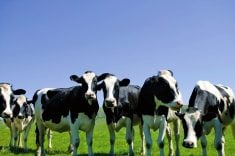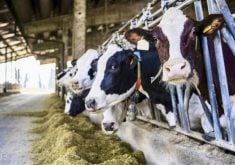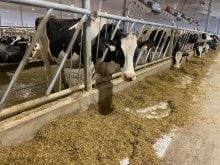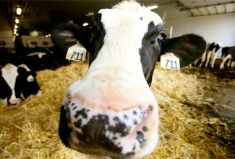Canadian dairy farmers will soon have access to fertility ratings for sexed bull semen.
Lactanet recently announced it plans to publicly release the ratings, previously provided to artificial insemination service providers only, in early 2024.
Dr. Gerrit Kistemaker, the national organization’s manager of genetic evaluations, gave an update on the process during Lactanet’s Open Industry Session last month.
Read Also
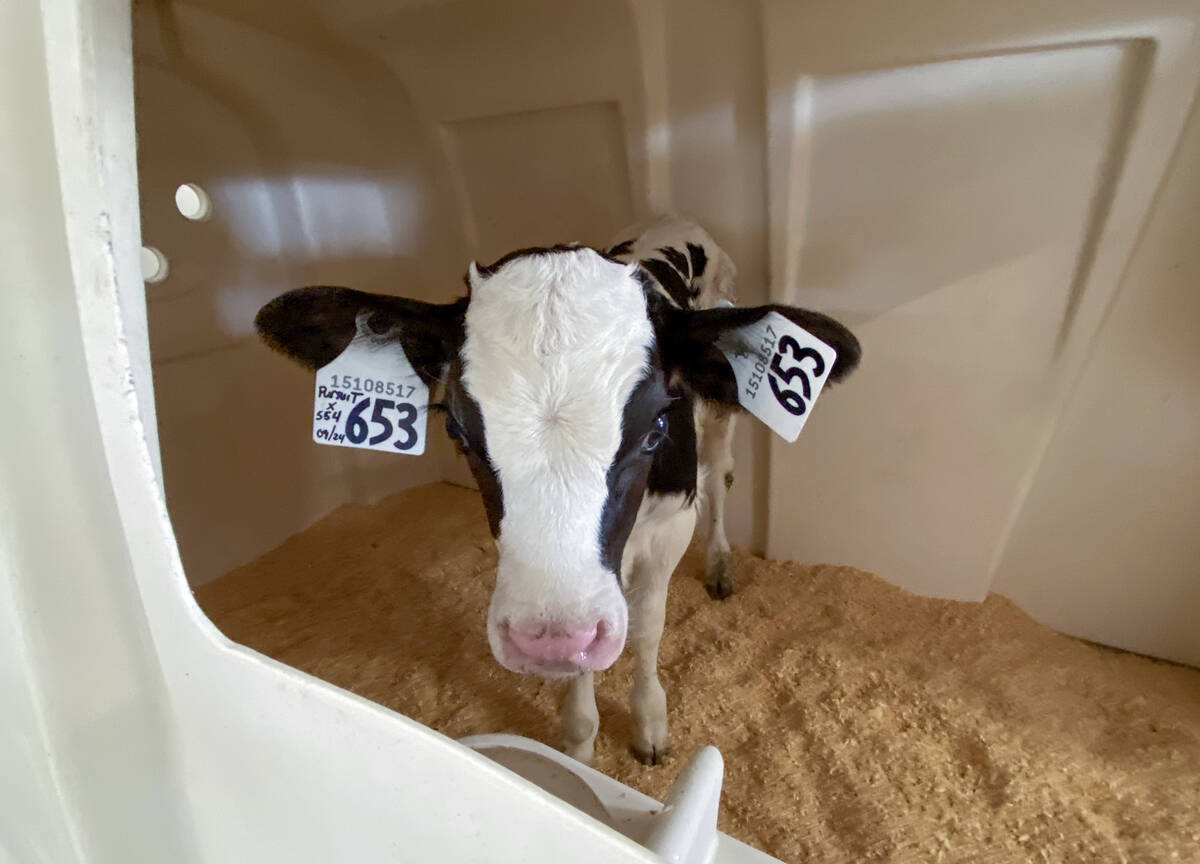
Lactanet turns methane expertise into business opportunity
Lactanet’s new fee-for-service breeding tool initiative to reduce greenhouse gas emissions in Canadian and Swiss Holstein herds will launch in April 2026.
Why it matters: The use of sexed semen continues to grow in Canada’s dairy sector. Information provided by Lactanet about bulls will soon be similar to what’s already being published for conventional semen.
Kistemaker said that, thanks to information provided by a combination of the AI companies’ on-farm personnel and through Lactanet’s regular milk recording and herd management visits, the agency has conventional semen fertility ratings for 802 Holstein bulls.
But when it comes to sexed semen, there’s no certainty that use of the product was accurately recorded through the Lactanet milk recording system, which relies on the farm operator making the initial record-keeping entry.
The identity of the bull is typically correct but there’s considerable margin for error or omission when it comes to recording the use of a sexed option from that bull.
Kistemaker says when sexed semen becomes available from any particular bull, Lactanet stops relying on on-farm milk recording data to build the semen fertility rating. The only reliable data comes from instances when sexed semen is used on-farm by an AI company’s breeder.
It typically uses the data from the most recent 12 months to determine a semen fertility rating, updated in a rolling manner. However, it has a minimum data point threshold of 250 records, and there are bulls for which there isn’t enough data from the most recent 12 months to calculate a rating. In those cases, older data is used, but never information older than five years, Kistemaker said.
Lactanet now has official fertility ratings for sexed semen from 258 Holstein bulls, 12 Ayrshire bulls and 49 Jersey bulls. So far, those ratings have been provided to the AI organization that has the bull in its lineup, for internal purposes, but they haven’t been displayed or published elsewhere.
In contrast, fertility ratings for conventional semen are currently shown on bull proofs.
“It’s not a genetic evaluation. It’s more of a phenotypic evaluation,” Kistemaker cautioned.
Also, unlike many other traits in the proof, a bull’s conventional semen fertility rating is listed, according to chief services officer Brian Van Doormaal, “in its measured scaled.”
It’s listed in the health and management section of the bull proof. The other 12 traits in that section are calculated relative to an optimum value of 100, but semen fertility is displayed as a percentage.
Van Doormaal said it is done this way to remind producers that it’s not genetically determined.
The addition of fertility ratings for sexed semen to published information will, at first, only be on the Lactanet website. Kistemaker said it would be too cumbersome to reformat the entire line of published documentation for a single trait.
Instead, sexed semen fertility ratings will be added to the published proof templates sometime in the future, when additional changes to traits are required.
When the sexed semen information is made available on the website, breeders will notice that with most bulls, the rating is less than the rating for the conventional semen option. Kistemaker says this is due to the extra handling necessary for the sexing process.
Among the sexed semen records, the median is approximately 55 per cent. For conventional semen, the median rating is approximately 61 per cent. For specific bulls, the range between ratings for sexed versus conventional semen is from 13 per cent lower fertility for sexed semen on the low end to almost equal on the high end.







